Search
Did you mean: Midas?
Search Results
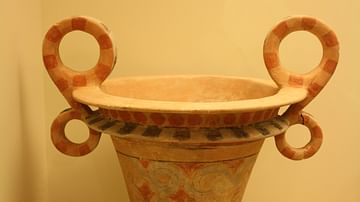
Image
Minoan Vase
Late Minoan polychrome vase, mid-15th century BCE, from Isopata. (Archaeological Museum, Heraklion)
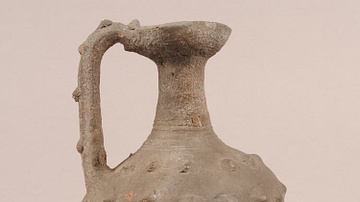
Image
Minoan Barbotine Jug
A Minoan jug in the Barbotine style where decorative excrescenses were added to the vessel, 1850-1800 BCE from Knossos. (British Museum, London).

Image
Minoan Rock-Crystal Vase
A Minoan vase carved from rock-crystal, from Zakros on Crete, c. 1450 BCE. The collar includes gilded ivory discs and the handle is made from rock-crystal beads strung on bronze wire. The vessel was probably used to pour liquids in religious...
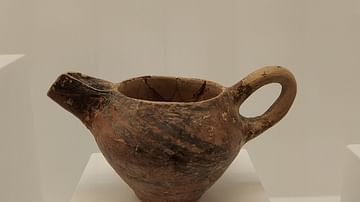
Image
Minoan One-Handled Spouted Bowl
The vase bears a black-painted linear decoration. Middle Minoan I Period (2100-1800 BCE). Made from clay. (Hellenic Museum, Melbourne, Victoria).
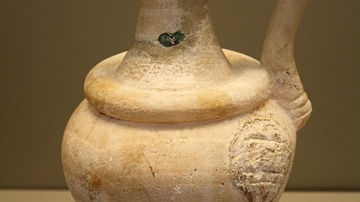
Image
Minoan Stone Jug
A Minoan alabaster jug, Crete, 15th century BCE. (National Archaeological Museum, Athens)
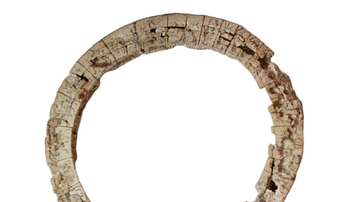
Image
Minoan Ivory Sceptre Covered with Two Linear A Inscriptions
The Minoan ivory scepter discovered in Crete in 2024 is engraved with the longest Linear A inscription ever found. The inscription consists of approximately 119 signs covering the entire surface of the circular head and both sides of the...
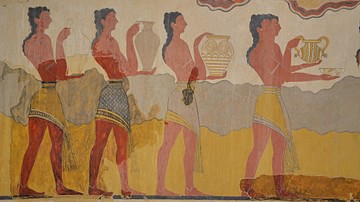
Image
Minoan 'Procession Fresco' from Knossos
Part of the reconstructed 'Procession Fresco' from Knossos showing five men walking to the right and carrying ceremonial vessels. They are dressed in kilts while their arms and legs are decorated with jewellery. Neopalacial period, 1600 -...

Image
Minoan Jug in Floral Style
Late New-Palace period (1450 BCE) clay jug with distinctive leaf pattern, from Phaistos. (Heraklion Archaeological Museum, Crete)

Image
Minoan Double Axes
Gold votive double axes, New Palace period (1600-1450 BCE), Heraklion Archaeological Museum, Crete.
The double axe, also known as 'labrys', may be the origin of the labyrinth myth of Knossos.
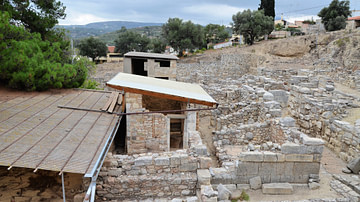
Image
Minoan Royal Villa at Knossos
The Royal Villa is located northeast of the Palace of Knossos (Crete). It was built on the east slope of the hill of Knossos and consisted of a ground floor and two other floors which survive in relatively good condition.